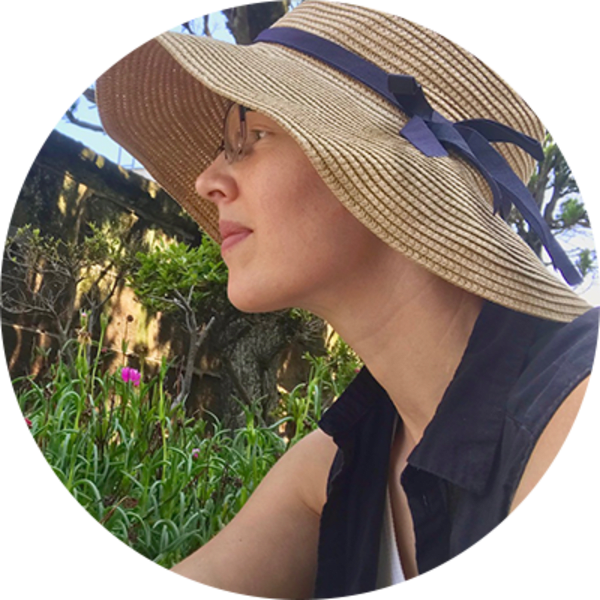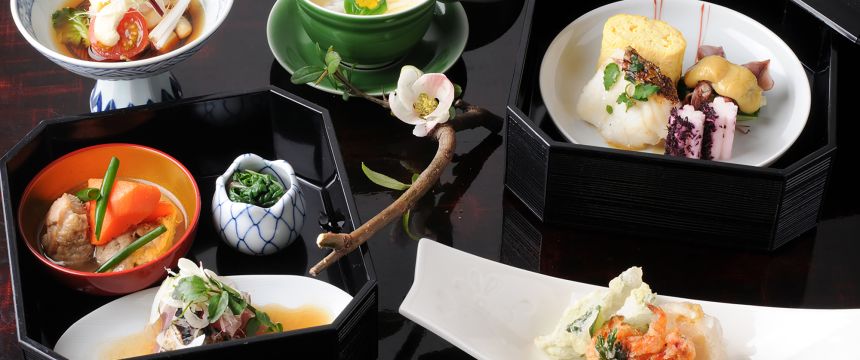Wazuka Town and Kyotanabe City, Kyoto Prefecture - Kansai

When it comes to Kyoto, the grand temples and sprawling shrines of the prefecture’s capital often overshadow its quieter areas and their simpler pleasures. But the countryside beyond the city’s hustle and bustle holds its own delights, as worthy of celebration as the Golden Pavilion.
Set a course for the prefecture’s southern region, where deep-green fields of tea blanket rolling hills. The area is famous for Ujicha, widely considered to be one of Japan’s three best teas. Take in the beauty of meticulously tended rows of tea shrubs, and delight in the flavors of locally produced tea. Head south, and discover the charms of a quieter Kyoto.
A Different Side to Japan’s Old Capital
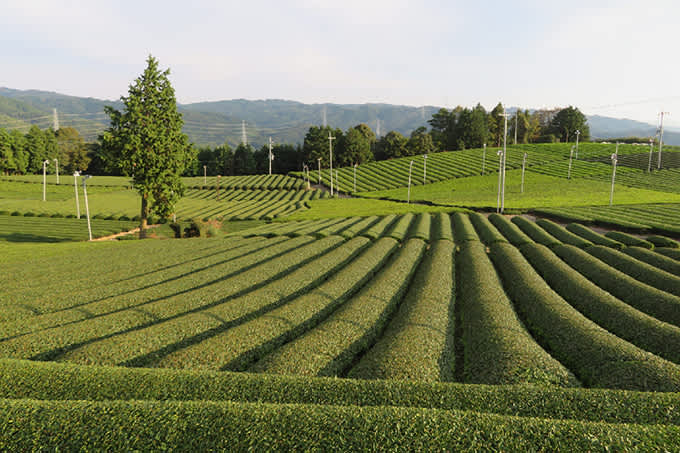
Travel to Yamashiro, an area of southern Kyoto known for its many tea fields, and make your way to the town of Wazuka. This is Yamashiro’s principal area of tea cultivation. Here, amid the endless rows of vivid-green shrubs, you will find the story of tea in Japan.
It is a long story, stretching back over one thousand years to the Nara period (710–794) and the Heian period (794–1185). It was during this time that Japanese envoys and monks journeyed to Tang-dynasty China to engage in scholarly disciplines and to study Buddhism. Along with this newfound knowledge and religion, they brought back tea across the sea to Japan, where it gradually spread throughout the country.
Find Hills Completely Painted Green with Tea at the Ishitera Tea Plantation

Good things often start from a seed, and tea in the Yamashiro area of southern Kyoto is one of those. It all began during the Kamakura period (1185–1333) with seeds shared between Buddhist monks. The receiving monk was from Kaijusenji, a temple in the Yamashiro area, and it was from those seeds that the cultivation of tea in Yamashiro began.
Of course, seeds alone do not make a plant. Conditions need to be right, and in Yamashiro they are—the soil in the area has both good drainage and good ventilation, and rain falls regularly throughout the year. Tea thrives here, particularly in Wazuka. In fact, the town is nicknamed Teatopia.
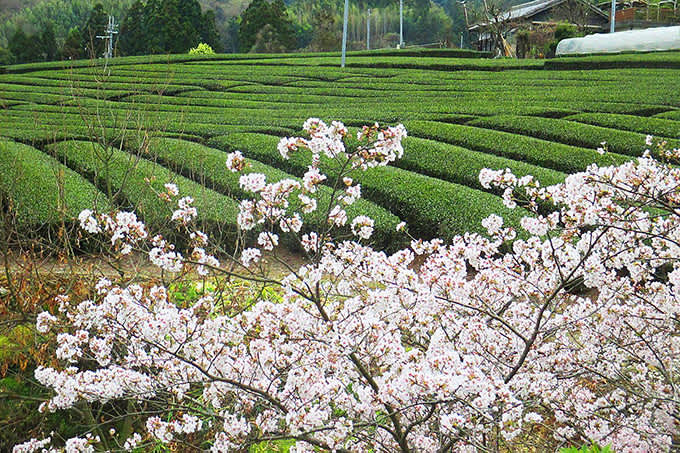
Head to the vibrant-green hills of southwestern Wazuka, where you’ll find the Ishitera Tea Plantation. Tea bushes are green in every season, meaning that any time is a good time to visit. In early spring, cherry blossoms add a dash of delicate pink to fields of buds sprouting emerald green. The month of May brings with it the year’s first harvest, and the fields are soon humming with farm workers busily picking tender leaves. In winter, the trimmed tea shrubs stand neatly in rows. Please remember that the beautiful fields are active farmland, and be sure not to enter them uninvited.
As you admire the vast fields, you will immediately understand why the Ishitera Tea Plantation is registered as an official Scenery Asset of Kyoto Prefecture and the region it is in designated a Japan Heritage site. Linger awhile, but not too long—it’s almost teatime.
Tea and Natto at Shuon'an Ikkyuji

Approximately twenty kilometers from the tea fields of Wazuka, the temple Shuon’an Ikkyuji provides a peaceful escape from the streets of Kyotanabe. The name Ikkyuji is the temple’s nickname; it was named for one of Japan’s great Zen priests, who spent his final years at Shuon’an.
Ikkyu, also known as Ikkyu Sojun (1394-1481), is connected to tea in a roundabout way. His Zen teachings influenced one of the most important figures in tea ceremony, Murata Shuko (1423-1502). In learning Zen from Ikkyu, Murata Shuko came to understand that tea and Zen had many similarities, and with that in mind, he laid the foundation for the wabi-cha style of tea ceremony. Were it not for Ikkyu, it is entirely possible that Japanese tea ceremony would not exist today.
The Zen priest’s influence is felt beyond the world of tea, as well. Ikkyu, born in 1394 and descended from both the imperial family and an Ashikaga shogun, was known for his Zen teachings as well as for his poetry. In fact, he is considered a representative figure of the Higashiyama culture, which flourished at the time and led to the development of well-known Japanese arts like tea ceremony and flower arrangement.
Ikkyu arrived at Shuon’an in 1455–1456. The temple, which was then known as Myoshoji, was in need of repair. Ikkyu rebuilt the temple and renamed it, and he remained there until his death at the age of eighty-eight.
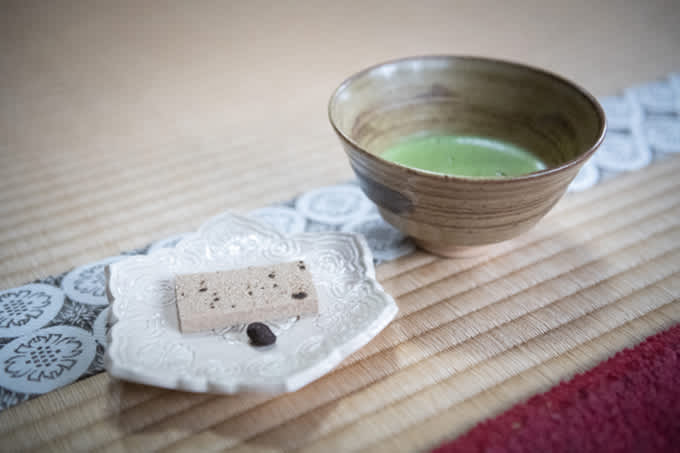
Explore Ikkyu’s temple, making sure to admire Hojo Teien (Hojo Garden), one of the reasons the Shuon’an Ikkyuji is a nationally designated Special Place of Scenic Beauty. Once you have finished wandering the grounds, it’s time to relax with tea.

Tea comes with a confection, and you will be given a choice: a Japanese rakugan or a boule de neige. Choose whichever you fancy, but know that both contain a surprising ingredient—natto (fermented soybeans)!

This isn’t your typical natto, though. This is Ikkyu natto, from a recipe passed down from the priest himself. Hundreds of years later, it is still made in almost exactly the same way as the original. You’ll notice that, unlike the natto you find with breakfast at a Japanese inn, Ikkyu natto is black and not stringy.
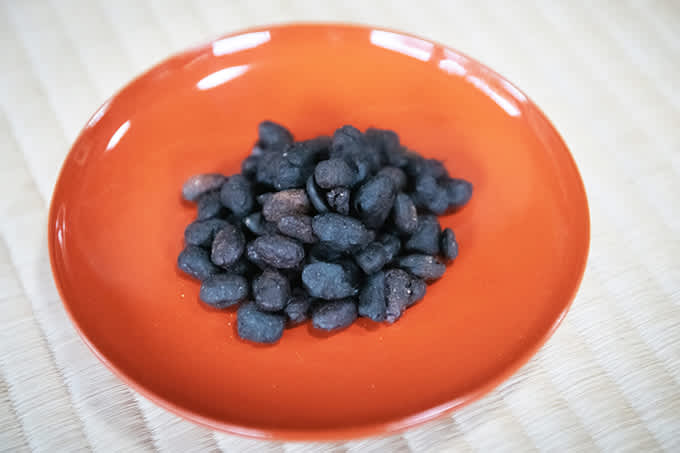
Pop into your mouth the natto bean that garnishes your sweet, and give it a chew. It has a saltiness to it and, when ground up, makes a good seasoning. In fact, the local French and Italian restaurants use it, as does the patisserie. Who would have guessed that natto and pastries were a match made in heaven?
Besides natto and tea, the temple also offers vegetarian shojin ryori, although reservations must be made in advance for this.

As you savor your final sips of tea, soak up the history around you. This is the land of tea, and hundreds of years of refinement have made your tea taste the way it does. A single cup of tea in a line of thousands.

Let southern Kyoto seep into your soul—the beauty of endless rows of verdant tea shrubs and the peace found at quiet temple grounds. Travel south, and let the charm of the Yamashiro area wash over you.
Contact Information
Ishitera Tea Plantation
Ishitera, Wazuka, Soraku District, Kyoto 619-1221
Shuon’an Ikkyuji
102 Takigi Satonouchi, Kyotanabe, Kyoto Prefecture 610-0341
How to Get There
Wazuka and Kyotanabe are located in southern Kyoto Prefecture. To reach the Ishitera Tea Plantation from Kyoto, take the Nara Line and Kansai Line to Kamo Station. From Kamo Station, a taxi will get you to the Ishitera Tea Plantation in about fifteen minutes, while a bus will take about thirty minutes. Get off at Wazuka Takahashi bus stop, and walk fifteen minutes to reach the fields. By car, take National Road 24 and National Road 163—it will take approximately ninety minutes to reach the fields from downtown Kyoto. To reach the temple Shuon’an Ikkyuji by train, return to Kamo Station and take the Kansai Line and Katamachi Line to Kyotanabe Station. From the station, a taxi will get you to the temple in about five minutes. On foot, it will take approximately twenty minutes. By car, it takes about forty minutes to travel between the tea fields and Shuon’an Ikkyuji.
Recommended Itineraries
The southern Kyoto region is home to many beautiful temples and shrines, including UNESCO World Heritage sites Byodoin Temple and Ujigami Shrine. Those interested in Japanese literature will want to visit The Tale of Genji Museum, which is located near the UNESCO sites. Enjoy tea to your heart’s content at the numerous venues dedicated to the beverage, such as the Uji tea-ceremony hall, Takumi no Yakata, and the Fukujuen Uji Tea Workshop.
Related Links
Kyoto Tourism, Kyoto Infused with Tea (English)
Kyoto Tourism, Kyotanabe (English)
Ishitera Tea Plantation (English)
Shuon’an Ikkyuji (English)
Kyoto (English)
Map
Featured Cuisine
Green tea is a cherished drink in Japan. The tea was first introduced over one thousand years ago, and its cultivation in Japan began in earnest in the twelfth and thirteenth centuries. Over time, the tea quickly developed a taste and character of its own. Because of its climate and good soil, southern Kyoto became a major producer of tea. Ujicha, the tea grown in and around the city of Uji, is considered to be one of Japan’s three best teas.
-
Author
Author: Helen
Helen hails from a small town in Central Canada. Shortly after completing an honors degree in history, a desire to study karate in its birthplace drew her to Japan. Since arriving in 2006, she has earned her second dan in Goju-ryu karate, fallen head-first into Japanese culture by way of cross-cultural marriage, and written about Japan for a variety of publications. She loves traveling by Shinkansen, curling up under a heated kotatsu blanket, and eating anything with mochi.
All information is correct as of the time of writing.
Please check for the latest information before you travel.




















































